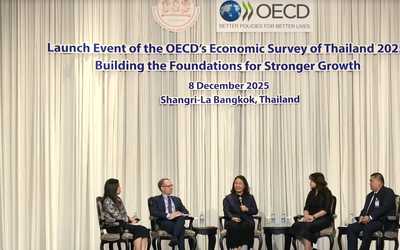Trade, Wage Premia and Labor Shortages
Abstract
Recent trade theories with heterogeneous firms build upon labor market frictions and search to generate rent sharing between firms and their employees and workforce adjustments following trade liberalization. However, little empirical attention has been paid to potential labor shortages. Using firm-level vacancy data from Thailand's manufacturing sector for 2003–2006, I construct the ratios of vacancies to employment to measure the extent of labor shortages across firms. I find that a cut in input tariffs raises not only wages at firms that use imported intermediates, but also their vacancies to employment ratios relative to firms that only source inputs locally. Importantly, firms with high vacancies to employment ratios pay higher wages, and even more so for importers of intermediate inputs. This evidence is consistent with the hypothesis that labor shortages constitute one empirically documentable mechanism by which importing firms pay higher wages: they search more intensively for workers, suffer more from hiring constraints, and hence increase their wage offers to raise adequately skilled employment following input tariff cuts.








